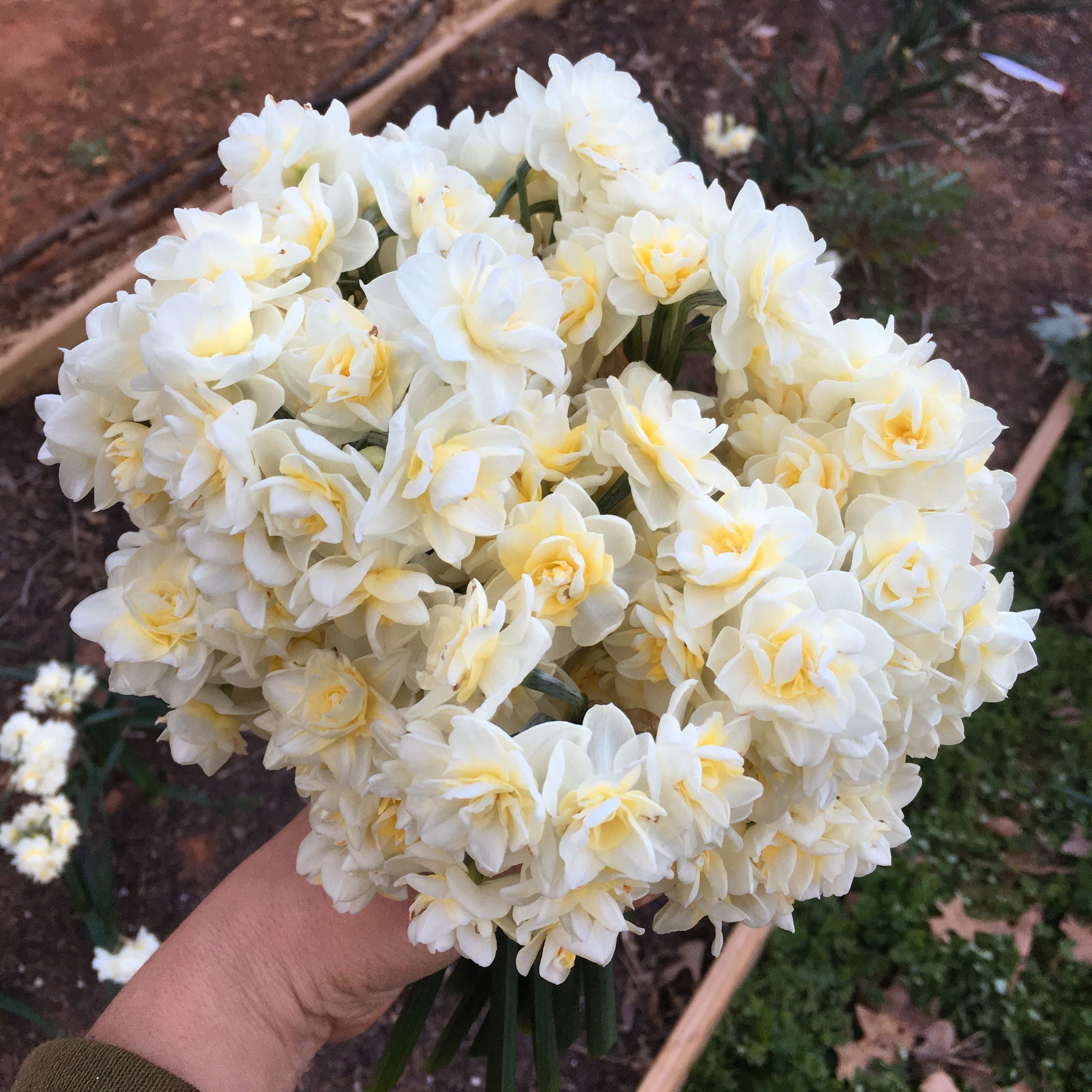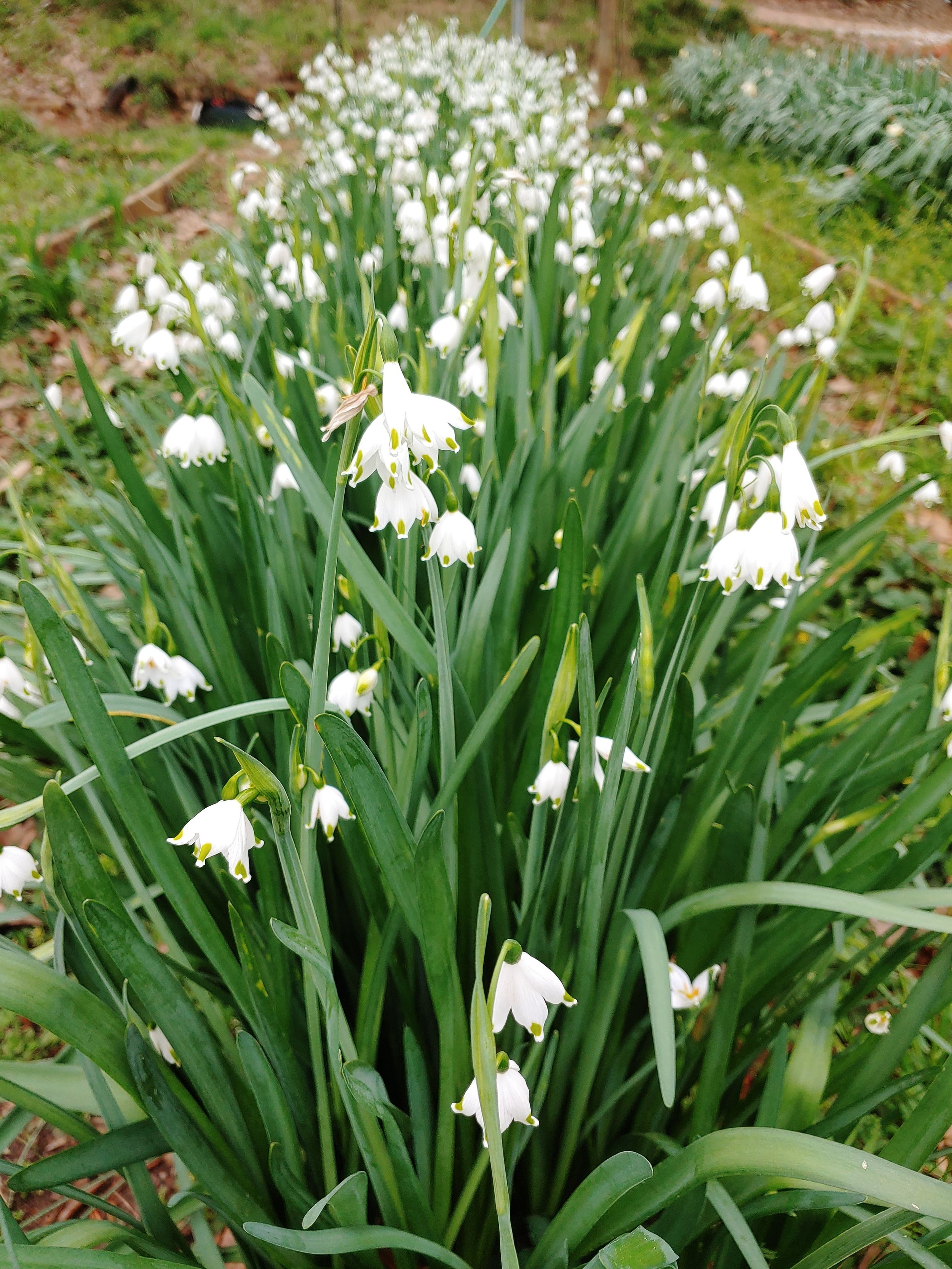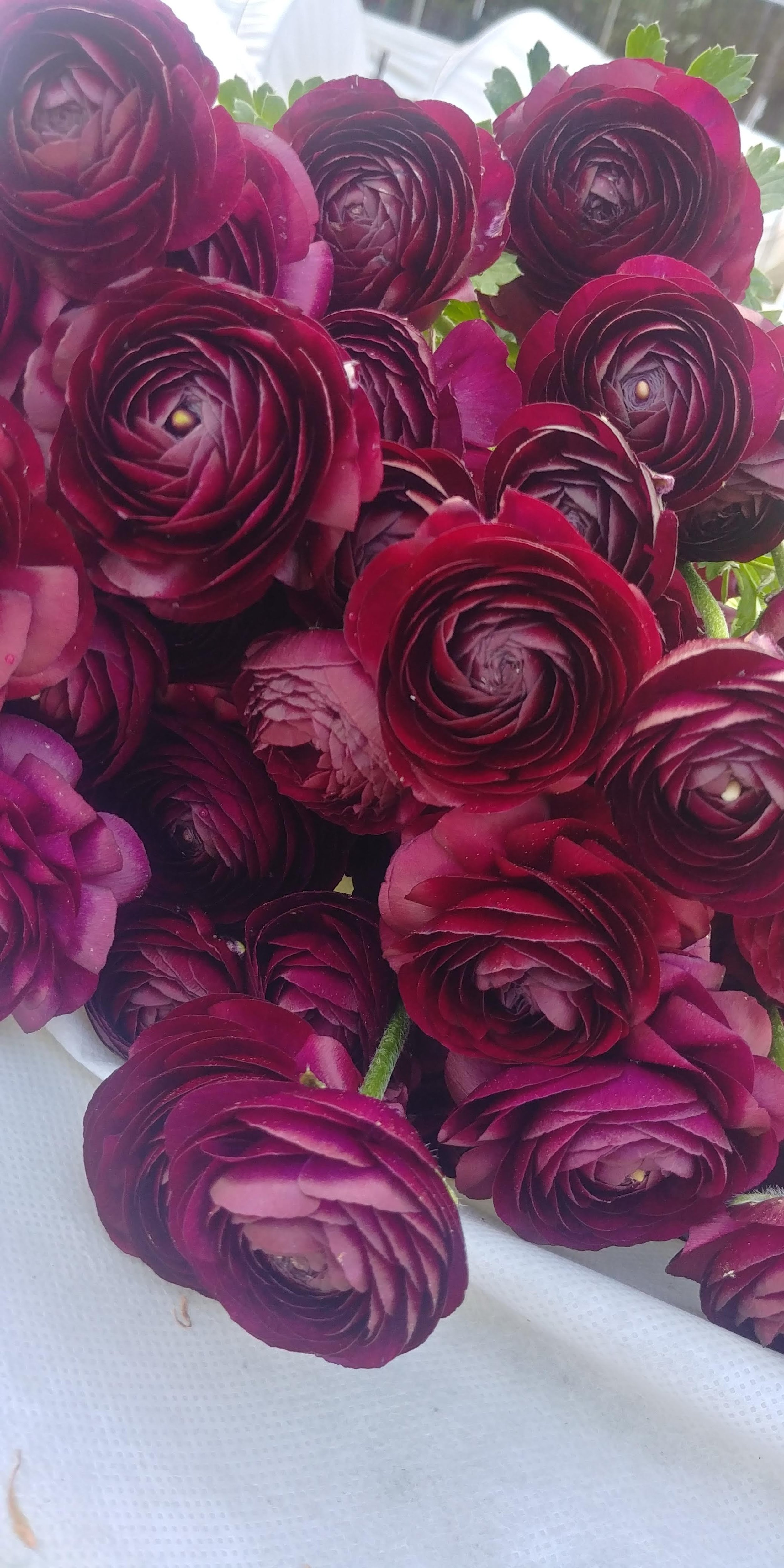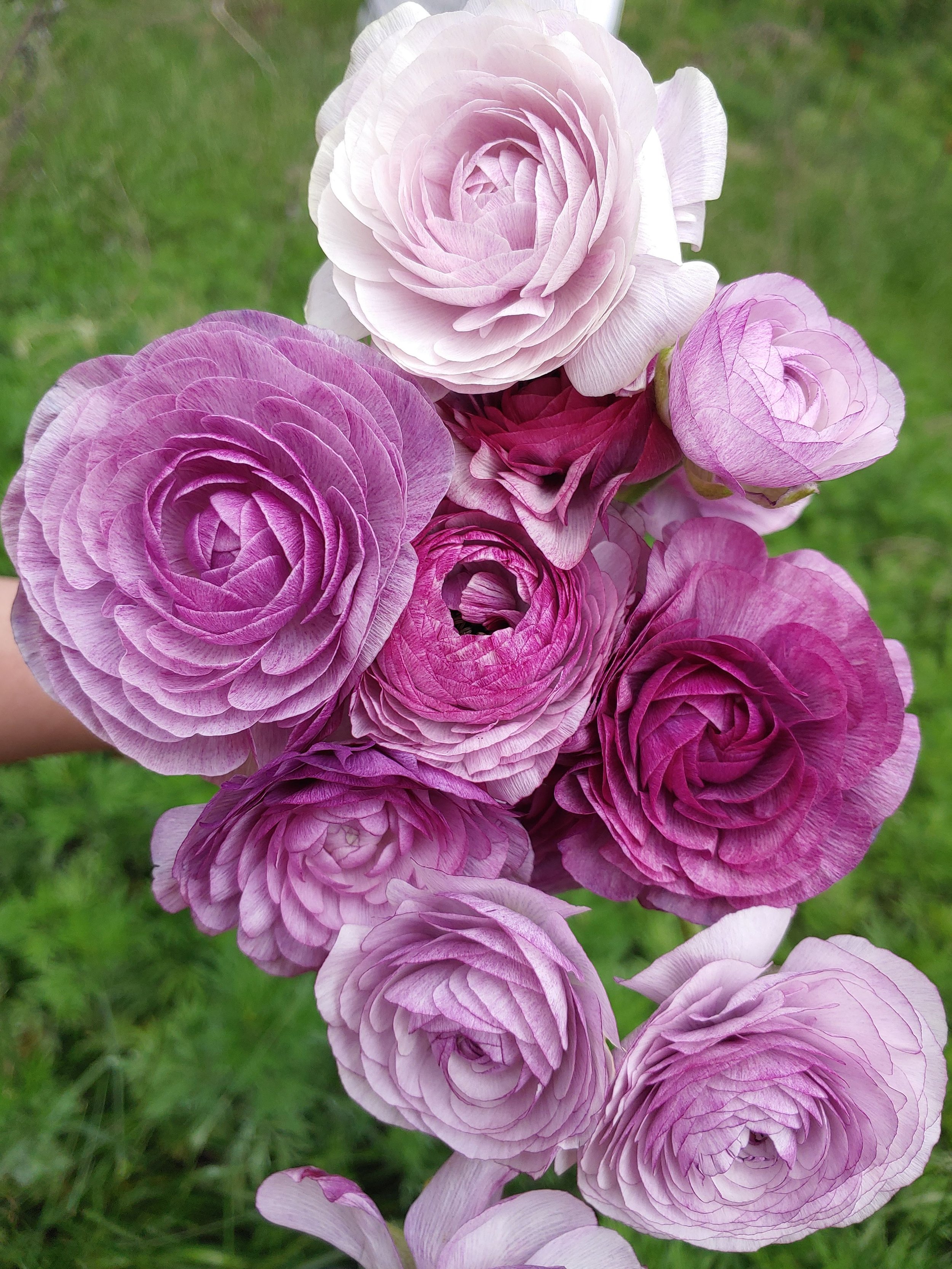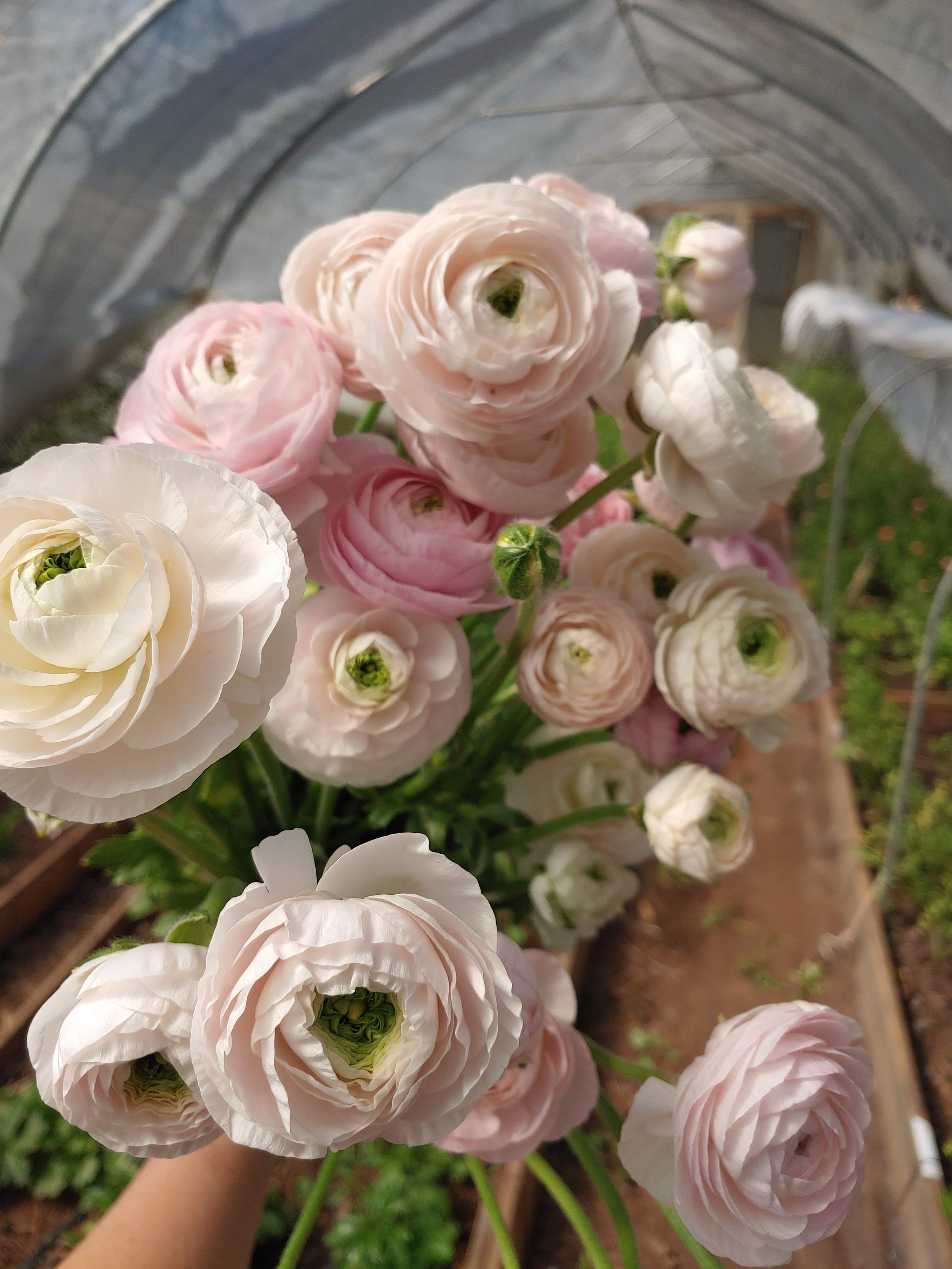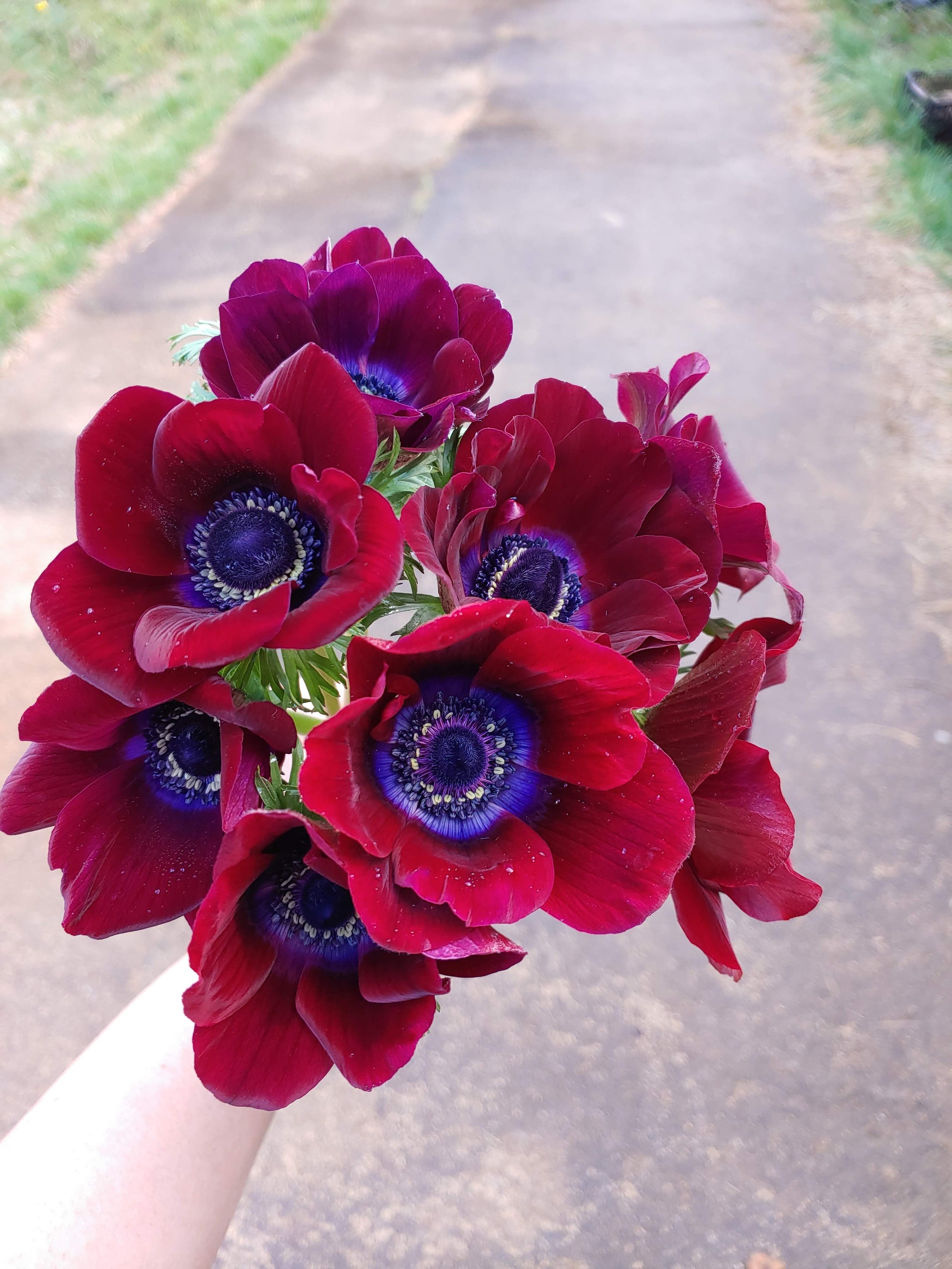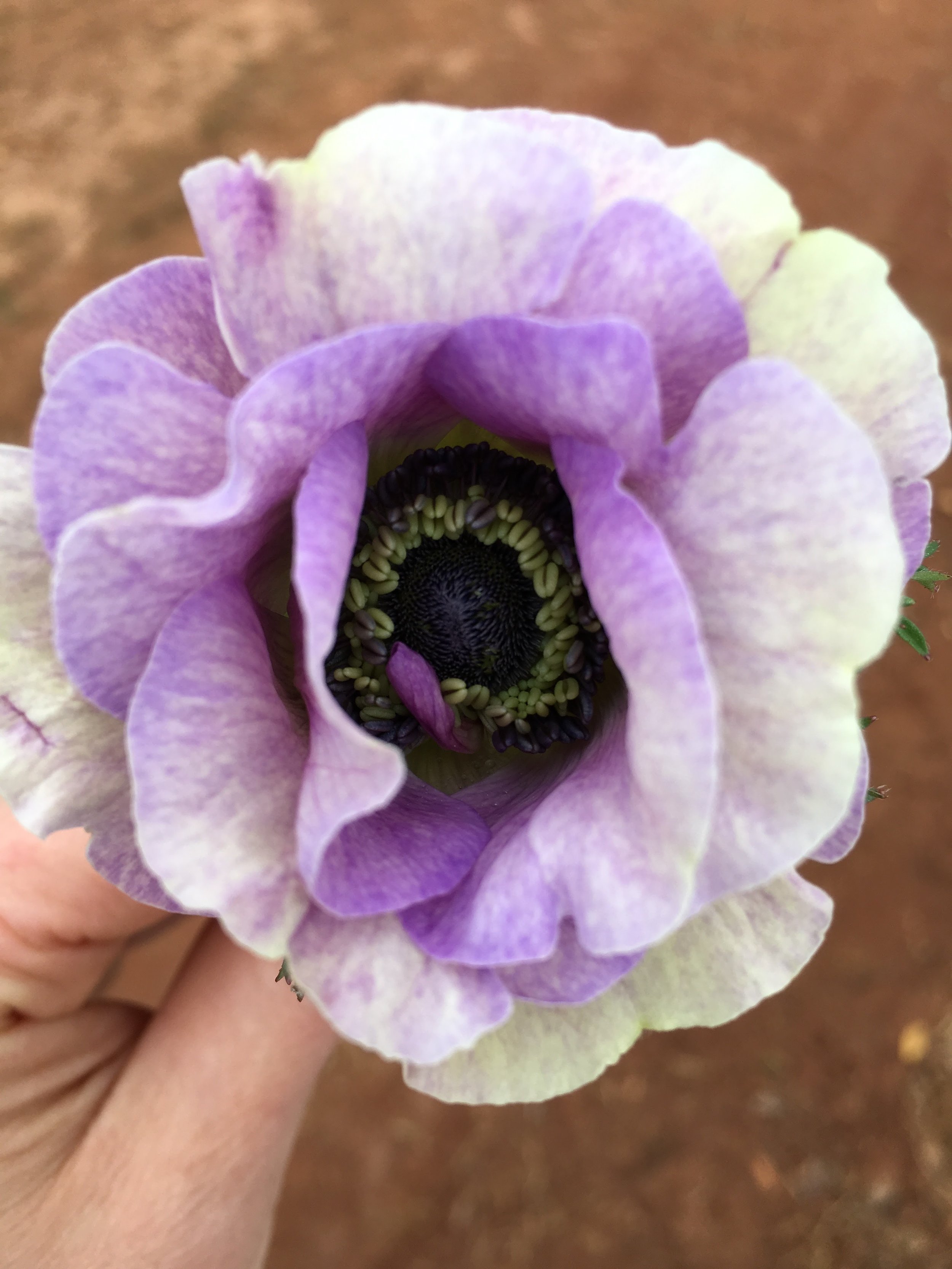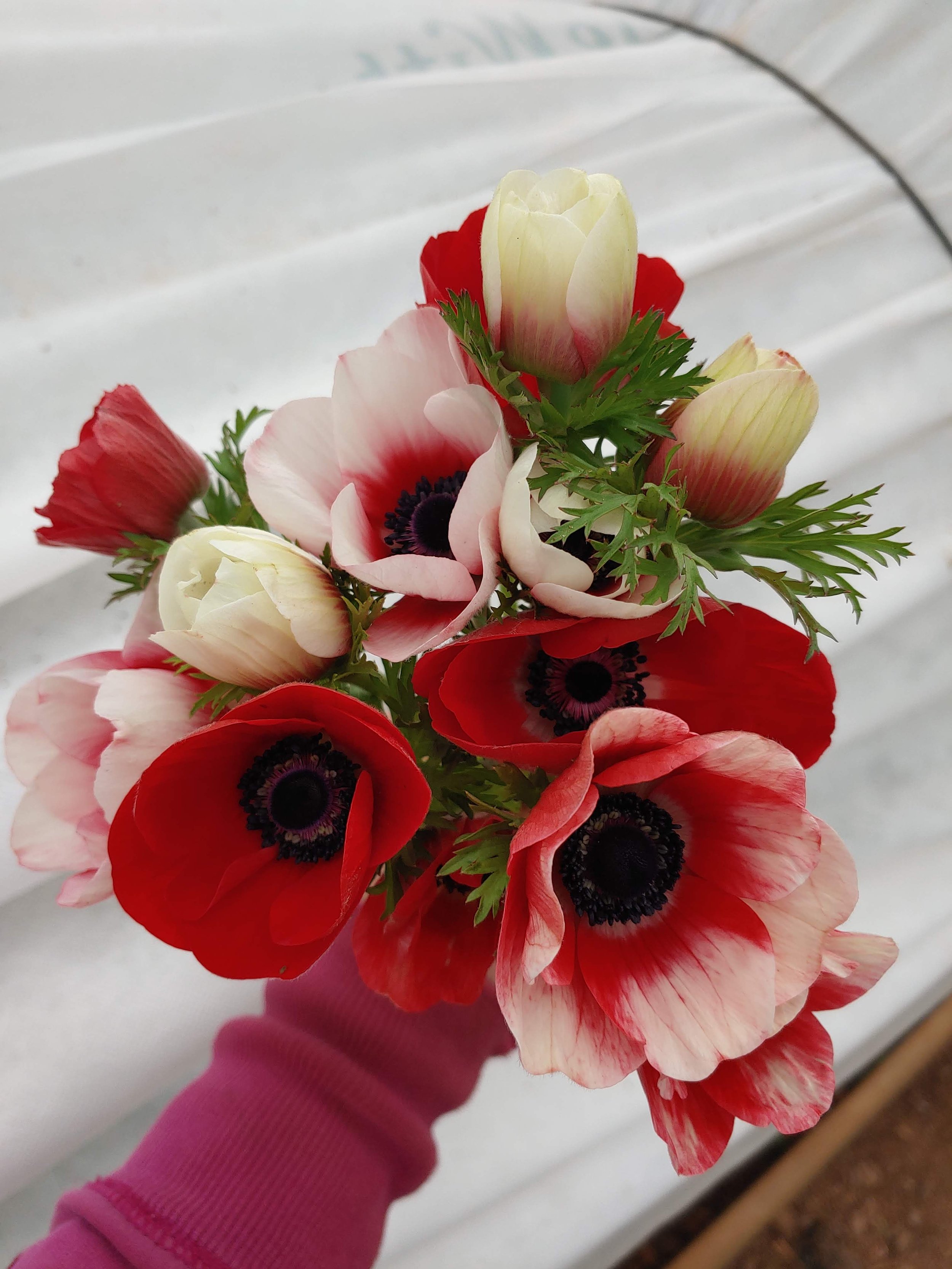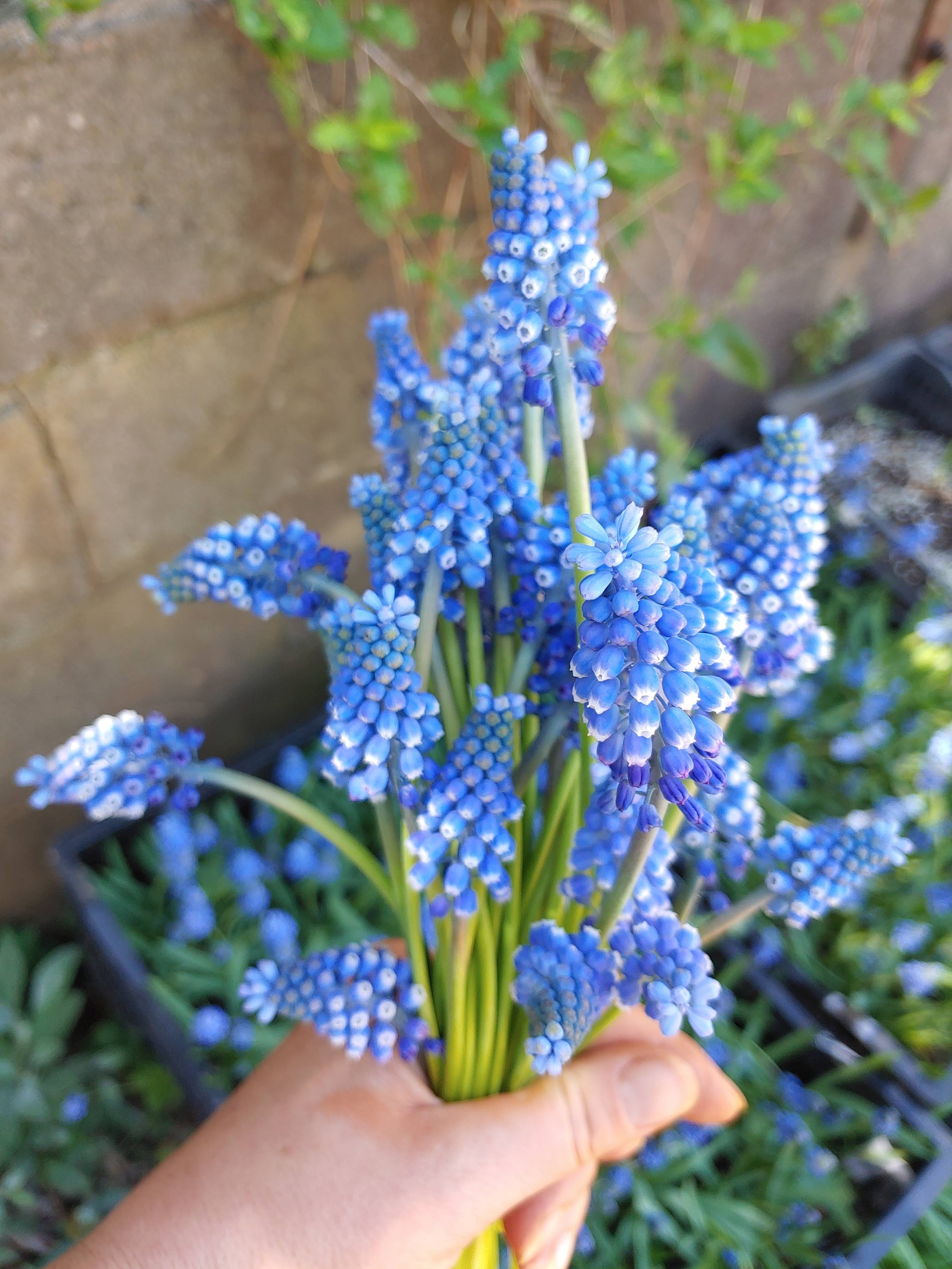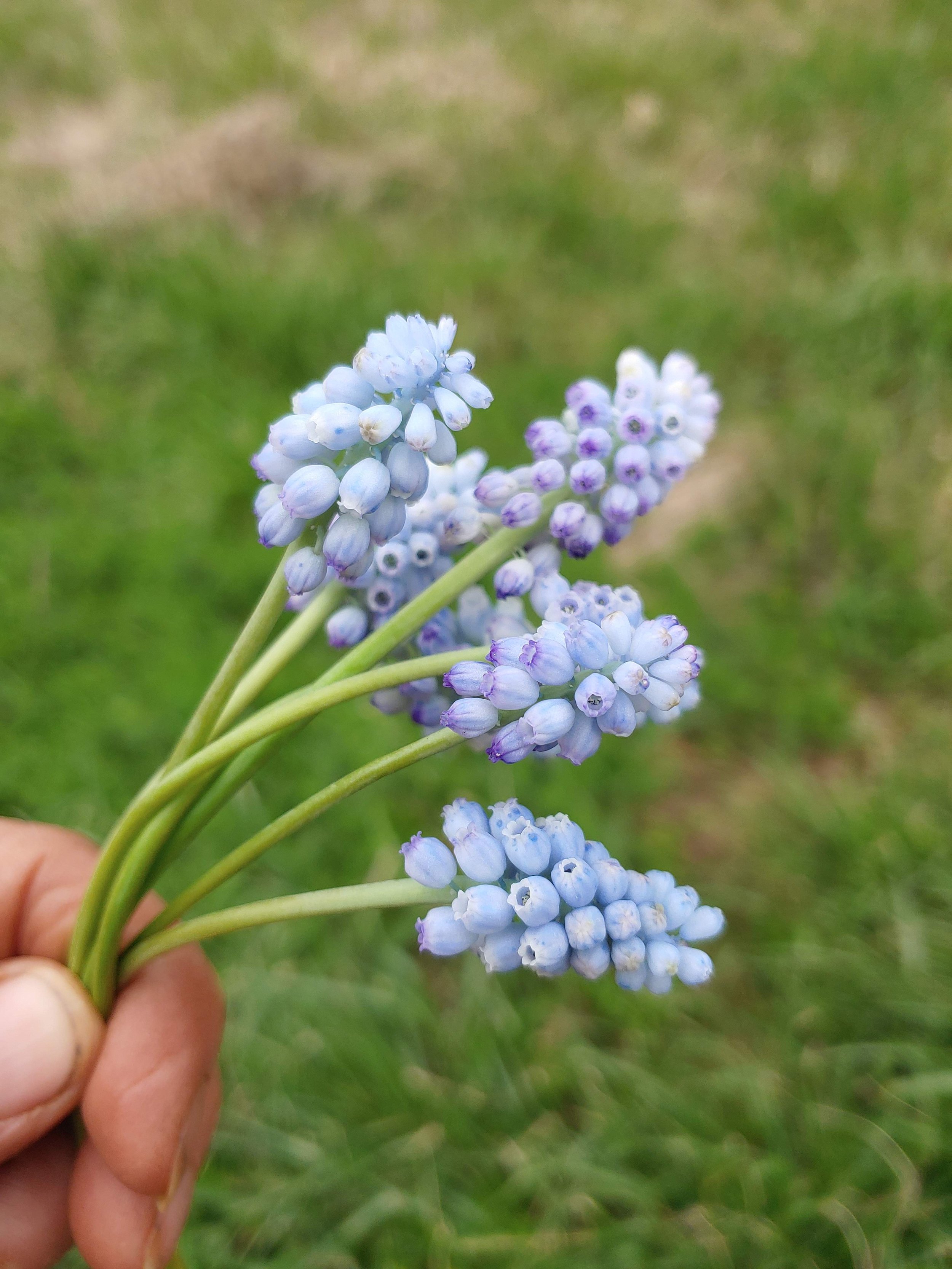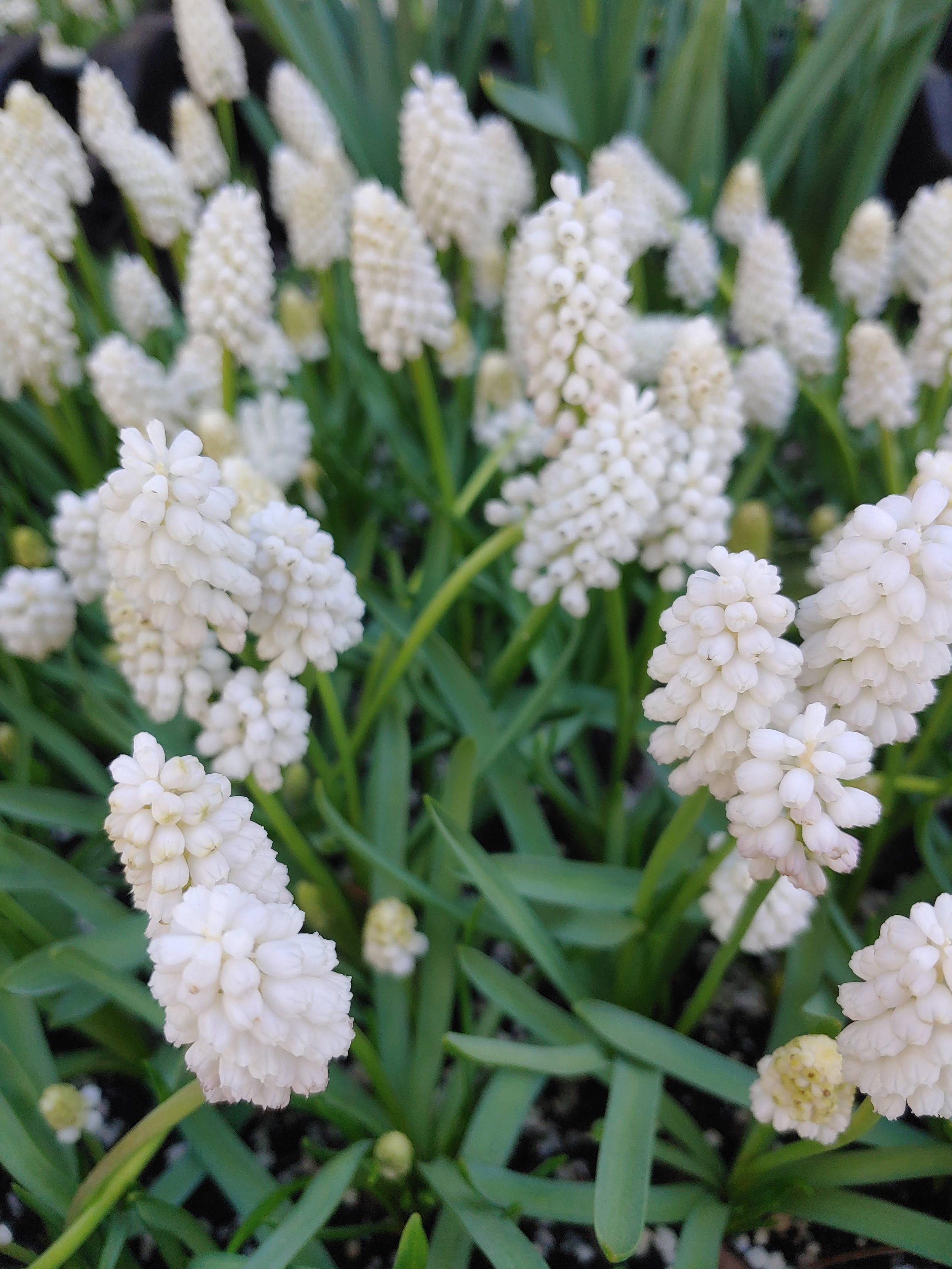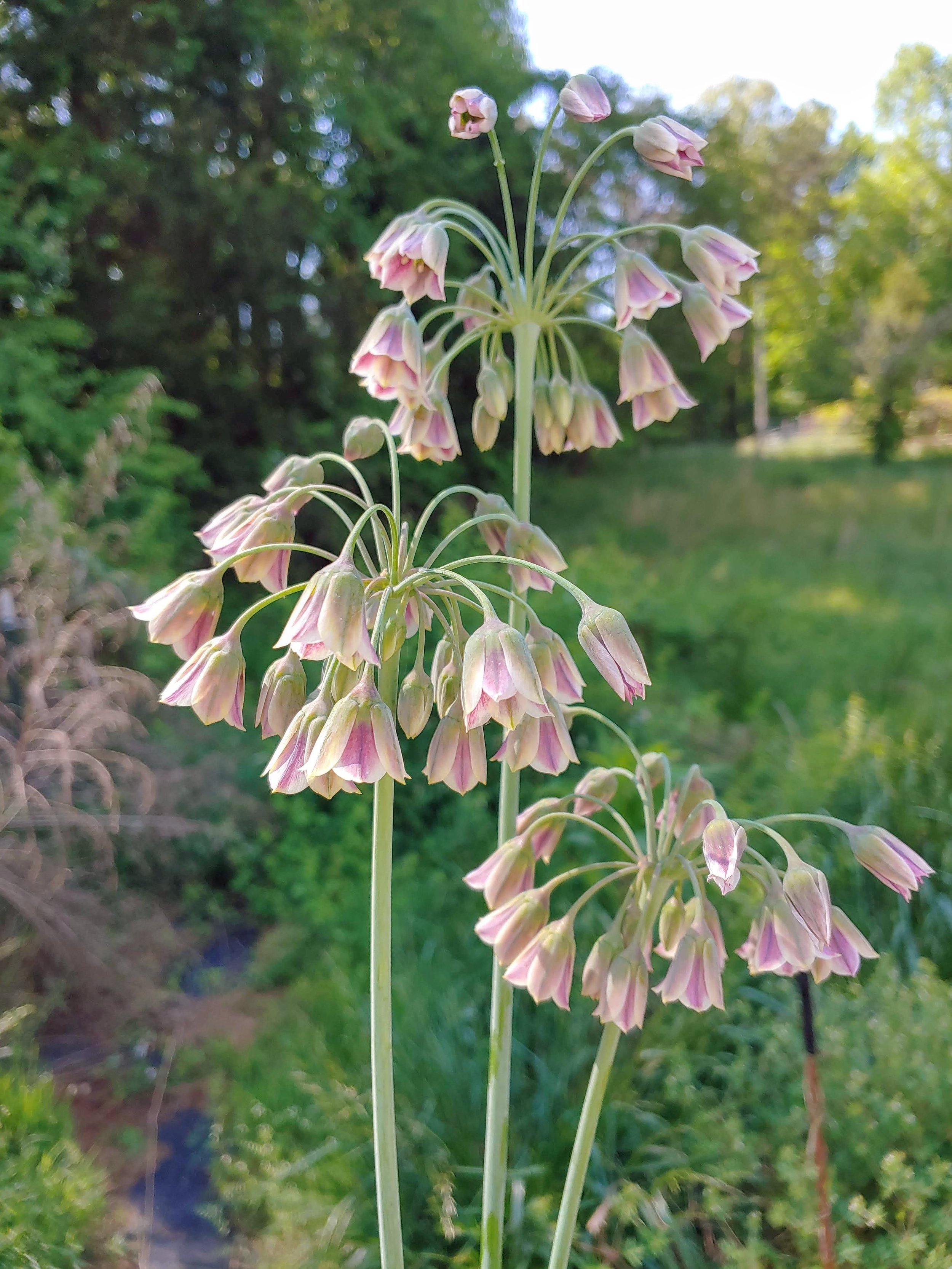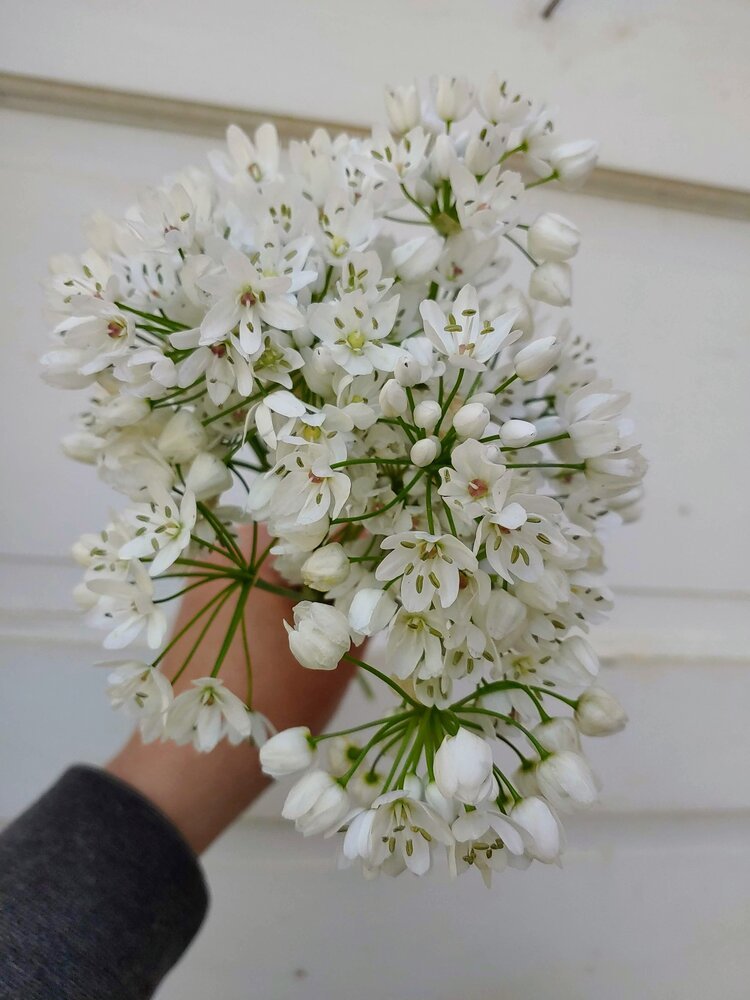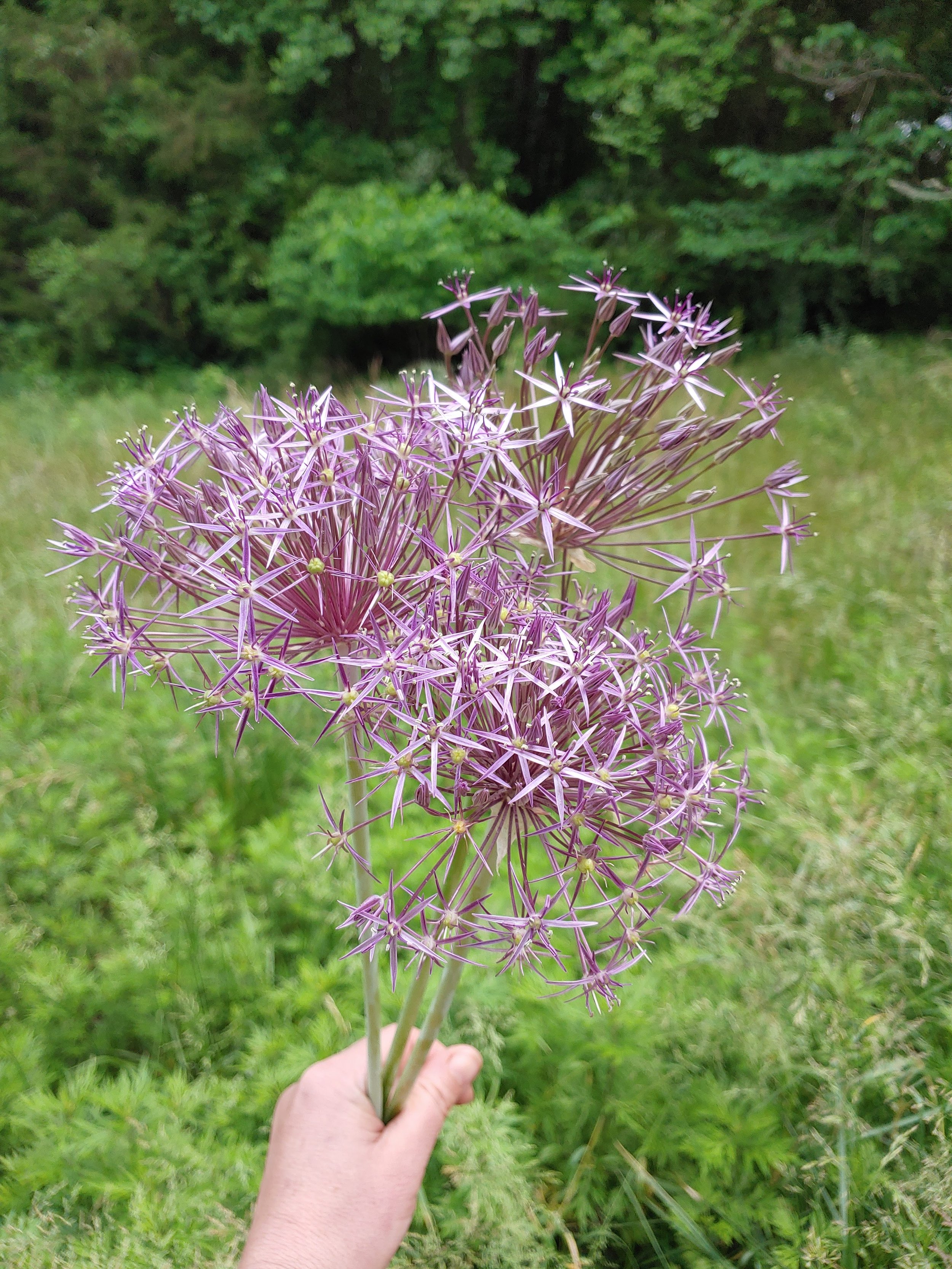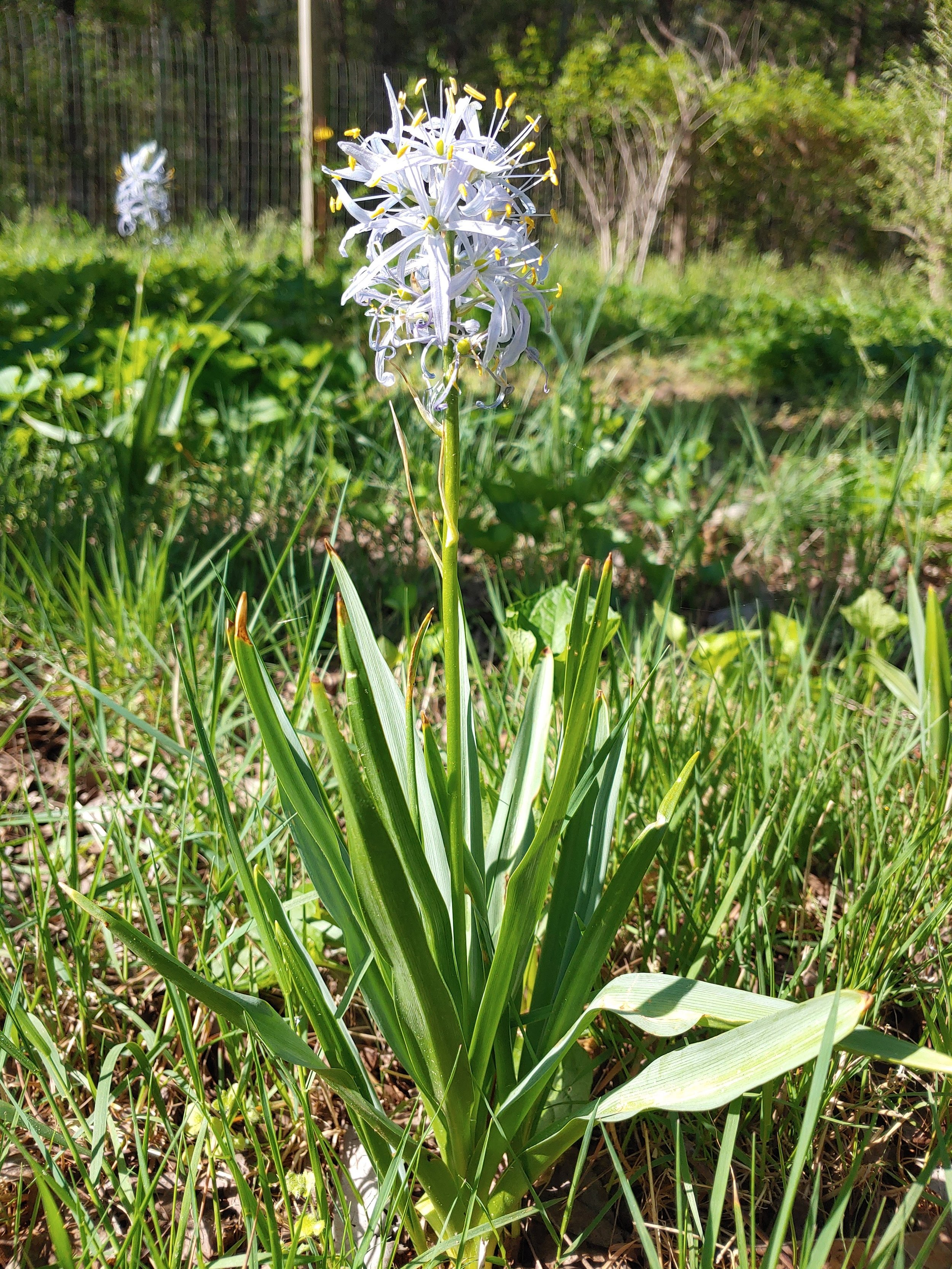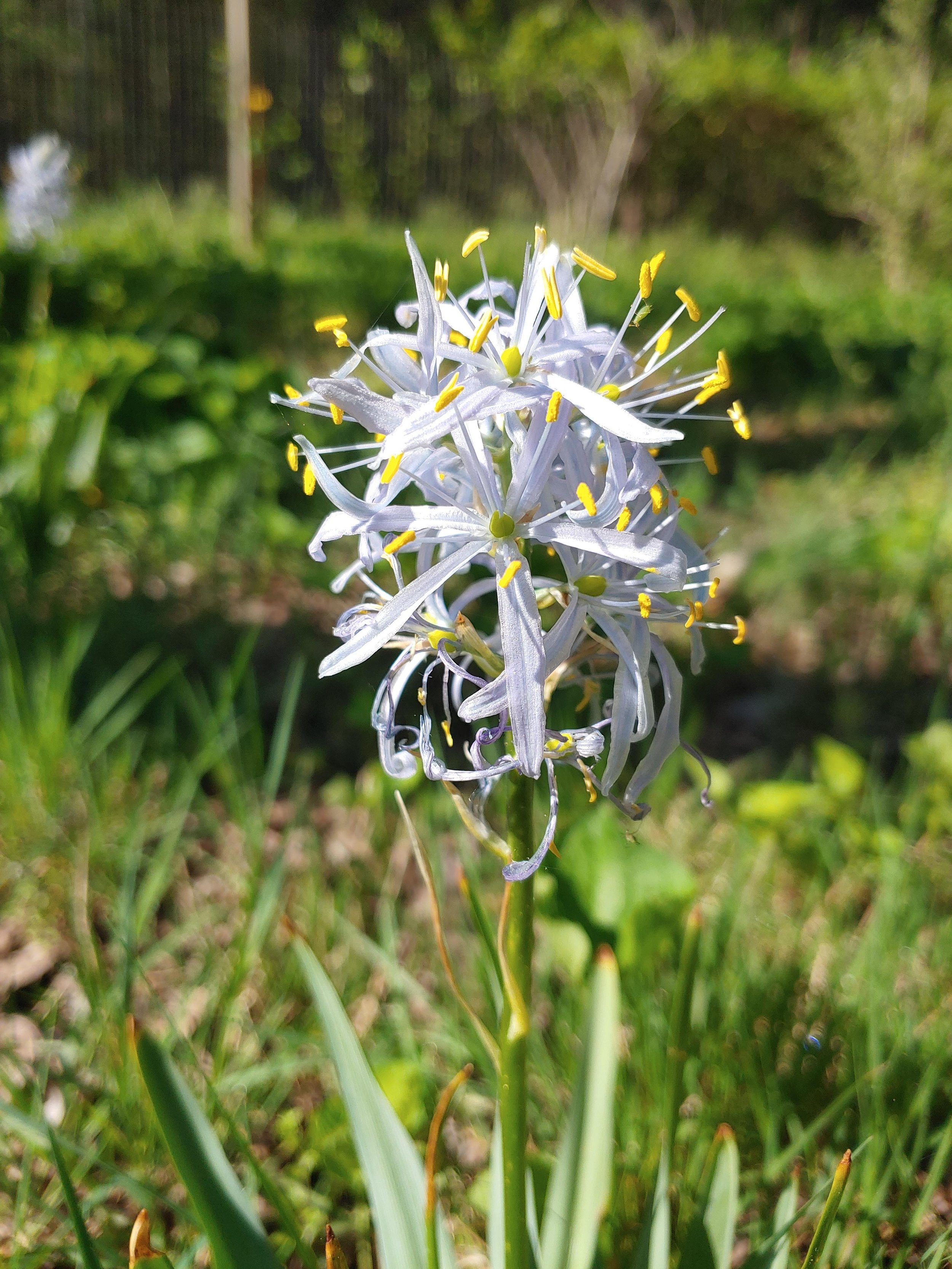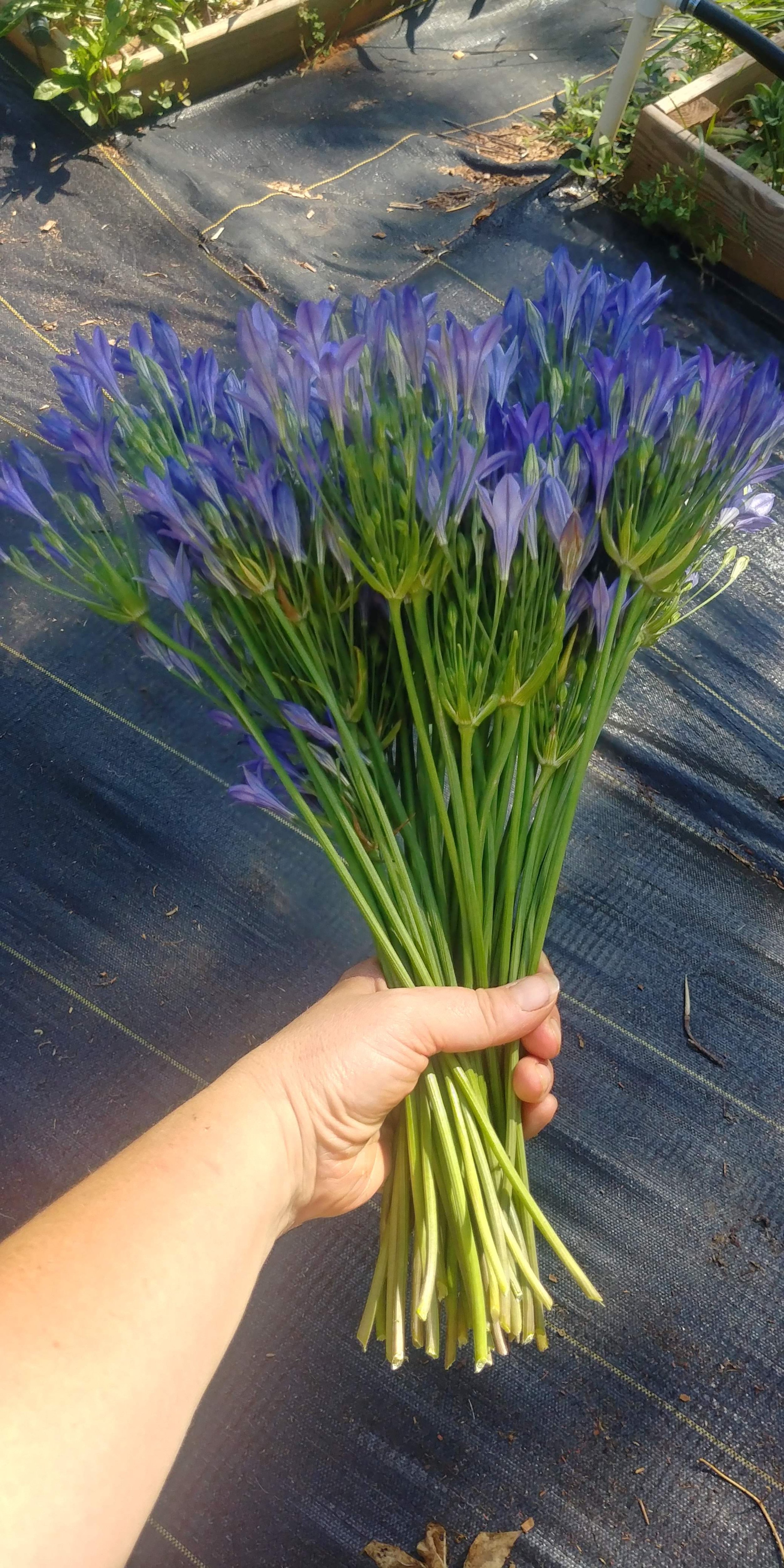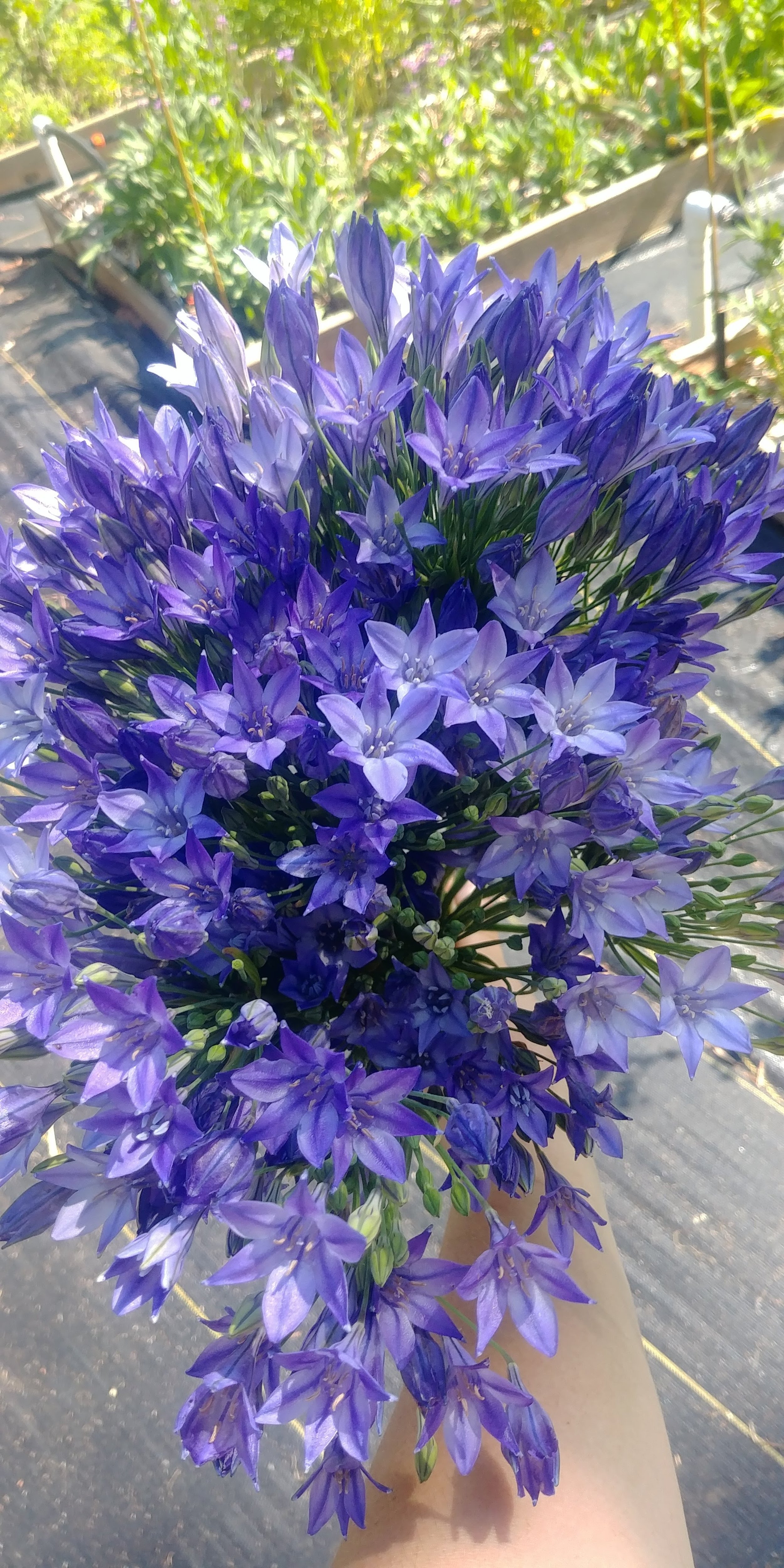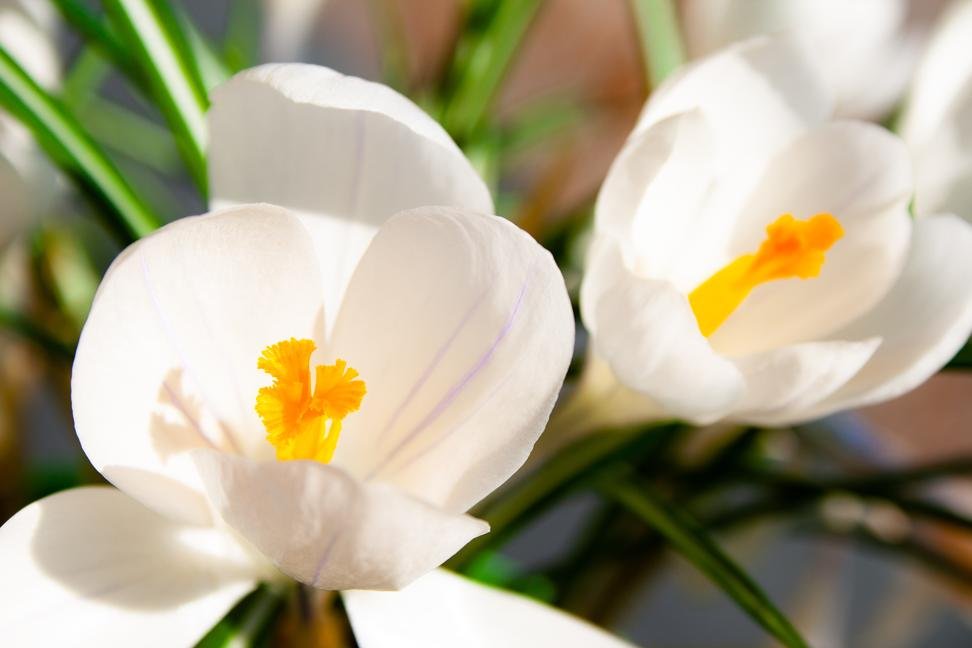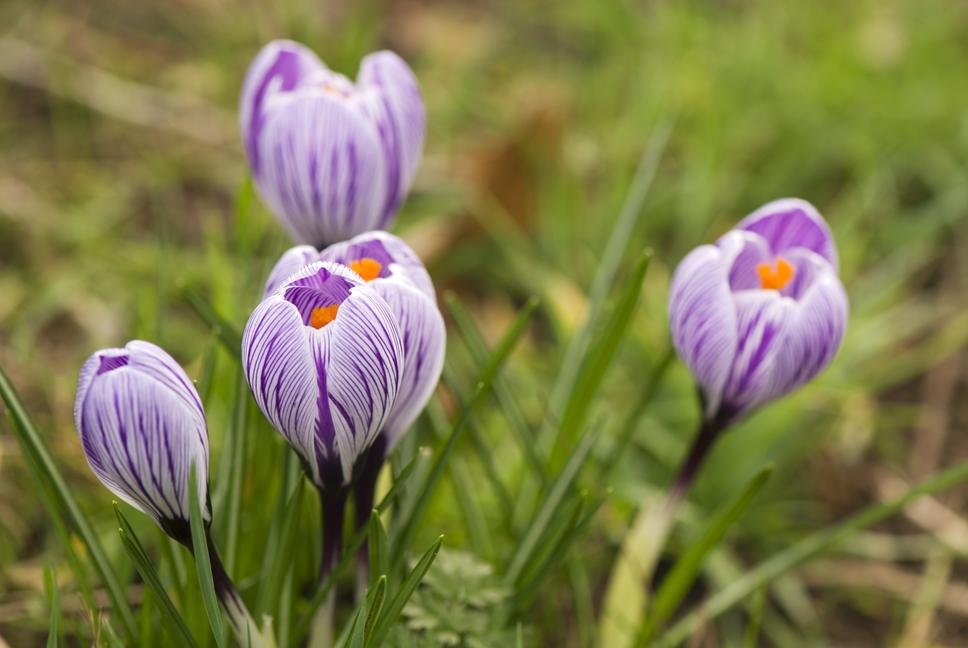
How to Cure the Winter Dahlia Blues
Do you dread the end of Dahlia season? I know I definitely miss having blooms on my table! I miss seeing luscious layers of petals all over Instagram. I’m already seeing some of my Northern friends having a frost.
Well, a few years ago, I discovered a way to cure the Dahlia Blues. You just have to take a (virtual) trip south! To the Southern Hemisphere that is!
At this time of year, flower farmers in Australia are gearing up to begin planting their dahlias. And when it’s bleak and cold here, they will be showing off blooms galore!
Today, I thought I would share with you some of my favorite farms to follow. So pull up your Instagram and get ready to go down the rabbit hole!
@florelieseasonalflowers A Dahlia farm in Bungaree, Australia
@the_flowering_field Burra, NSW Australia
@southernhighlandsflowerfarm Southern Highlands, NSW Australia
@geelong_dahlias Moolap, VIC Australia
@serenade_farm_tamborine_mtn Tamborine Mountain, Australia
There are many more but these are some of my favorites! It’s really fun to learn about how dahlias are grown in other climates and parts of the world!
Coming to terms with loss....
The idea of loss in growing is something I’ve wanted to discuss for a long time now- but it’s not the most alluring topic. However, accepting that we will lose plants when growing is important.
I think most of us would agree that it’s generally been a harder than average year for growing dahlias. In fact, if this is your first year— hang in there, It’s not always this way! If you are still interested in growing dahlias after this rough year, then I’d say that I think you have what it takes to be a great dahlia grower. I feel like this year is an ideal time to talk about loss.
So let’s define what I mean when I say “loss”. I’m referring to plants dying due to rot, disease, pest pressure, lack of attention, adverse weather conditions, or just failure to thrive. Commercial growers are familiar with this idea. We figure it into our crop projections. We know that we will lose a certain percentage of our crop because there are so many factors out of our control.
I assume that I’m going to lose 20% of my dahlia crop in my financial crop projections. I do include not being able to sell a % of the crop due to things like over production at certain times (when the dahlias are in flush but your demand doesn’t quite meet the supply) or blooms coming on at the wrong time in your sales cycle.
But most of the loss comes from things like tuber rot, possible disease (we cull at the better safe than sorry stage), or pest damage.
Loss is normal. Say it again- Loss. is. normal. Now I know it’s harder to accept when you aren’t growing 1000’s. I’ll admit that I don’t sweat it anymore (well not that much). When you grow 1000’s, losing a few hundred is normal. But when you buy 5 for your garden, it hurts losing even one. But it’s still normal.
We aren’t perfect beings and neither are our plants— They are grown by us, ya know! We as humans make mistakes. As dahlias get more and more popular, unfortunately the rate of mistakes will arise. And by mistakes I mean mislabeled tubers, possible virus in the tubers or rooted cuttings. It’s going to happen.
So what can you do about it? I’ve given it a lot of thought this summer. First off, I’ve decided to adopt an attitude of grace. It’s important to remember that we are human. We are not perfect. We make mistakes — Just like that dahlia grower who sold you the wrong tuber. Tuber sellers aren’t out to send you the wrong thing- but remember they pretty much all look alike once frost comes! It’s hard to keep track of several hundred varieties.
Every year, I trial around 100 varieties. (Yes, I’m as addicted as you are!) This means that I order from a lot of different sources, I try out new ones all the time. So I know this increases my chances of getting a mislabel, poor quality, etc.
So the second thing I’ve done is to increase my level of education. This is where it’s important to learn the symptoms of possible virus in a tuber. It’s important to evaluate and inspect each tuber that arrives. And to inspect them in a timely manner— don’t let that box sit in the corner for weeks. Being a highly educated consumer allows you to catch mistakes earlier and to protect your field from becoming virus infested.
Third, keep up with how tubers from certain sellers perform. It can be hard to figure out reputable dealers at first- this takes time. But one thing you can do is make friends with other dahlia growers— We love to talk dahlias and most are willing to share who offers great quality.
Fourth- It comes back to grace here— except that even the most reputable dealer out there is going to screw up at some point. Give them a chance to make it right before you go blabbing it to the world- just a common courtesy.
Fifth— Grace again here- but this time give it to yourself and accept that somethings are out of your control. You can have the healthiest tuber out there and then the weather comes along and hands you conditions that no tuber should have to grow in. (This has been the case a lot this season!) It sucks to lose an expensive variety but it happens and it will happen again in the future. Loss is normal. But so is success- Remember you may have lost 1 out of that 10 but 9 are still blooming their heads off!!
Remember it’s more about learning a new skill- how to grow an amazing dahlia. Learning this skill requires that you accept the idea of loss. Once you’ve accepted it as normal, it becomes less of an ordeal and you can focus on the gorgeous beauty of a garden full of dahlias!
What to plant for a succession of Spring Blooming Bulbs
Planting bulbs is probably the easiest way to get a continuous succession of Spring blooms. It’s definitely one of those activities for which I thank myself later!
Over the years, I’ve observed and learned what blooms when and filled in the gaps so that I have a continuous supply of blooms from my bulbs. I grow in South Carolina, Zone 7b so my timing is based on that. If you are warmer, then back the timing up a few weeks to a month. If you are colder then push the timing forward and also realize that you may have some items that bloom more at the same time instead of in a long succession. The milder winters that warmer regions have can cause a longer periods of blooms. Also please keep in mind that yearly weather patterns can accelerate or delay blooms by a matter of several weeks sometimes.
So here’s how I have it planned out in my farm/garden. The season begins in late February to early March with early blooming Narcissus (Earlicheer). Narcissus are divided into early, mid and late types so you can plant all of them and get 6-8 weeks worth of blooms. Earlicheer is the earliest variety I have. White Lion is my next variety to come into bloom followed by Tahiti. Snowdrops bloom about the same time as mid season narcissus which is late March through early April in my area. The snowdrops make a beautiful addition to any narcissus bouquet.
Anemones come in early March most years, sometimes February if we are having a warm winter. Fritillaria Meleagris joins them in mid march. Ranunculus usually begin later March through early April and continue through Mother’s Day.
Muscari will join the bouquet in mid to late March.
Alliums are another bulb that can take you through several weeks. I usually have them in bloom for 4-5 weeks by planting different types. Cowanii is first, then Christophii and Sicilium followed by Unifolium. The super large ones (I don’t grow these) come in mid may from what I can tell. Alliums usually begin in mid April.
Camassia is one of the last to bloom in mid to late May. I always welcome their cute star shaped flowers. They don’t make the greatest cut flower but I like to grow them just for their presence and I love the soft blue color.
Tritellia is another late blooming bulb- late May to early June. It’s just harder to find. I tried to source it for this year’s bulb sale but was unable to get it. But if you can find it, it will complete a 5 month bulb succession. They come in blue, white and pink if you can find it.
Crocus are a new one for me this year. I’m adding them in to begin the flower show even earlier. I think they will beat the narcissus. So my hope is that from February to June, I can have an easy to grow bulb blooming in my garden.
So here’s the cheat sheet: In Bloom order—
1. Crocus
2. Narcissus, Anemones, and Ranunculus
3. Muscari and Fritillaria
4. Alliums
5. Camassia
6. Tritellia
** Most of these will come back year after year. I do plant my anemones and ranunculus as annuals though. You can try treating them as perennials but sometimes they do rot out during the summer. They are a good candidate for digging and storing however. If you are warmer than zone 8, I’d skip the later narcissus and alliums as they require longer cooling periods. It’s possible that even with the earlier varieties they may be more of an annual in a warm climate.
So what are you waiting for? Go make your wishlist from our Fall Bulb Sale! Here’s to a beautiful Spring filled with blooms!!
How to Grow a Beautiful Spring Garden When You Don't Have "Full Sun"
One of the most frequent comments I hear when talking to people about their gardens is - “I don’t have enough sun.” And if you drive around neighborhoods, you’ll see that this is very true, especially in older neighborhoods with established tree cover.
Well, I’m here to tell you— You can grow a spring garden!
Snowdrops - Galanthus Elwesii
Let me introduce you to the concept of “winter sun.” Winter sun is when you have sunlight in an area only in the wintertime. This is due to trees dropping their leaves or the sun hitting at a different angle than it does in the summer time.
In hot climates, winter sun gives us a unique advantage. A lot of spring flowers (especially bulb grown) don’t love heat. If you’ve lived in a southern climate for more than one year, you know that spring weather can be a roller coaster- freezing nights one week and 70+ the next. It’s enough to drive a farmer crazy!
But if you plant in an area that has leaf cover from high trees in the hot months of the year, it’s great for Spring flowers. Through the winter, the bulbs sprout and begin to grow with a little extra sun due to no leaf cover and then as it warms up, the tree leaves sprout and provide a bit of shade for the cooler weather loving plants!
Anemones “Blue”
I use this concept a lot on my farm. I have a hillside that has great drainage and is shaded by a large oak tree. On this hill I have around 200 hellebores. They bloom like crazy in February and March, then in April the tree begins to leaf out and the hellebores have their coveted shade the rest of the year.
This fall I am going to add some biennial (2nd year flowering) foxglove to this area. Foxgloves aren’t an easy perennial in our climate because they hate our heat. So my thought is— why not give them somewhere that has some winter and spring sunshine so they can bloom and then they can spend the summer in the shade!
Muscari- Blue Magic
You can plant ranunculus, anemones, tulips, alliums, crocus, daffodils, muscari, and many other spring blooming beauties in a winter sun area. Full sun is fine too but I love this concept because it opens up so many new possibilities.
Early Spring blooms are the best because their cheerful colorful blossoms are such a welcome sight after the dreariness of winter!
I challenge you to take a look through your yard and find a winter sun location to plant some bulbs this year!
New Dahlia Variety Highlight
Usually I wait until a little later in the season to highlight some of my new (to me) varieties but - Why wait? I’ve noticed some good ones so I thought I’d share.
Everything listed here is new in our trial field this year or on a year 2 trial.
Innocence- I grew this back in 2020 but unfortunately lost the tubers. I’m glad to have her back because she’s gorgeous. 5-7” wide, soft blush, gets softer as she ages, great vase life. She would be a stunner in the garden. It’ll be a few years but this will be in future tuber sales for sure!
Jabberbox. Such a cute name and great dahlia too. 3-4” wide, great color variation, strong stems, tall but not overly so- big enough to have presence.
Beatrice. Soft copper bronze grown in the field, soft bronze based peach grown under cover (as shown here). Early, first to bloom in our field this year. Strong stems, not super tall plant, average height.
Valley Rust Bucket. This one is going to give Brown Sugar a run for it’s money in the “rust” color category. BS is darker but I like the color variation on the petals of VRB better. Earlier blooming, strong stems, 3-3.5” plant height. 2.5-3” wide bloom
Just a few that I’ve taken notice of this year! What’s your new favorite? Drop me a line and let me know!











